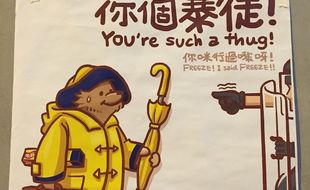Occupy Central with Love and Peace: a civil disobedience campaign headed by Benny Tai, Chan Kin-man, and Chu Yin-ming to pressure the Chinese Central Government to reform the electoral process to guarantee universal suffrage. It began on September 28, 2014 at 1:40am when Benny Tai announced the official start. That night, the protests in the Central district were marked with high levels of police brutality. Tear gas and pepper spray were used against protesters. The use of tear gas was highly significant as it was never used before in Hong Kong since 2005. The brutality of police response led more citizens to get involved as the police and government were attempting to silence the protests. https://oclphkenglish.wordpress.com Class Boycott Campaign: student strike that occurred between September 22 and September 26, 2014. It gave rise to the Umbrella Movement. It protested the Standing Committee decision on the election of Chief Executive. The campaign was jointly organized by Scholarism and the Hong Kong Federation of Students. The protest mostly included university students but expanded to include high school students on September 26. The Goal of the boycott was to demonstrate the extent of discontent from students over the government decision. Approximately 5,000 people participated in the boycott campaign. http://www.bbc.com/news/world-asia-china-29306128
Communication was spread to channels of social media such as Facebook and Twitter. Messages on social media were translated from Cantonese to different languages like English and Spanish to lower the language barrier of the activists. The Facebook page for Scholarism has over 300,000 likes and followers. Their social media sites typically post protest information, press conferences, pro-democracy messages, and speeches. Some of the videos posted on the social media sites have English subtitles and some posts have English translations. Other than social media, the group holds press conferences and engages with the Hong Kong media to spread their message through traditional means. Their conferences are usually attended by masses of reporters and regular citizens.
Scholarism allowed for pro-democracy activists to have the ability to bring change such as the creation of the political party, Demosistō that fights for autonomy and the liberation of Hong Kong from the People's Republic of China.
Demosistō created a place for pro-democratic people to voice their own opinions and to seek to change the legislation enacted by the Hong Kong Government. The political party has also allowed for students and young people to make a difference in the official legislative body in Hong Kong.
The occupation sites have also served as spaces for people. Protestors used colorful tents to occupy space in the Central district, the busiest business neighborhood in Hong Kong. The use of these tents to occupy space expressed the critical discontent with the Hong Kong government and the Chinese government. These tents blocked high-volume traffic and drew widespread attention to the Umbrella Movement.
Artwork was an integral part of the Umbrella Movement. It expressed and documented the demands of what the activists wanted. The concept of why the movement is known as the "Umbrella Movement" was because of the prominent presence of umbrellas used by protesters to block pepper spray and tear gas used by police. There was artwork around Hong Kong during this time that ranged from calligraphy to chalk drawings to sculptures. The places of these art pieces were usually in sites where protestors were heavily occupying such as the Central District and Admiralty.
Other than uplifting artwork highlighting the advances of the movement, there has been caricatures of leaders such as CY Leung and Xi Jinping. Cardboard cutouts of Xi Jinping, the President of the People's Republic of China, where he's holding a yellow umbrella were placed throughout Hong Kong in high-volume occupation areas like Causeway Bay and Admiralty. A well-known 10-foot statue called Umbrella Man was created by an artist, Milk. The statue is a wooden-textured man that holds a yellow umbrella. It became an icon associated with the movement as photographs circulated around the world on the front page of newspapers and on websites. Many pieces of artwork during the Umbrella Movement criticized the Chinese Communist Party. For instance, artwork depicting the Chinese Flag raining down on umbrellas exhibited the rejection of Hong Kongers against Communism. The protests were nicknamed as the Umbrella Movement due to protestors using umbrellas to block tear gas and pepper spray attacks by the police. Thus, umbrellas were used in many variations of art afterwards.










